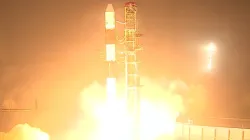ISRO successfully launches SpaDeX Mission for rare in-space docking | Watch
ISRO's PSLV-C60 mission, featuring the innovative SpaDeX technology, aims to make India the fourth country capable of space docking, marking a significant milestone in its space exploration efforts.

In a groundbreaking achievement, the Indian Space Research Organisation (ISRO) has successfully launched its PSLV-C60 mission, featuring the innovative SpaDeX (Space Docking Experiment) technology. The mission involves two small satellites, named Chaser and Target, each weighing approximately 220 kg. This mission is set to propel India into an exclusive group of nations capable of conducting space docking.
The PSLV-C60 SpaDeX mission is of monumental importance to India’s space exploration capabilities. Should the mission succeed, India will become the fourth country in the world, after Russia, the United States, and China, to possess the advanced technology required for space docking. Currently, this space docking technology is held by only three countries, making ISRO’s achievement a significant milestone.
What is SpaDeX?
SpaDeX stands for Space Docking Experiment, and it aims to demonstrate the process of docking and undocking two spacecraft in orbit. Docking refers to the process of joining two spacecraft together in space, while undocking is the process of separating them. The PSLV-C60 mission will carry out this experiment, using its Chaser and Target satellites, and demonstrate the technique of space docking and undocking, which could play a key role in future space missions.
Significance for India’s space ambitions
India’s space ambitions are poised for a major boost with this mission. The successful demonstration of docking technology is seen as a stepping stone for future goals, including the establishment of India’s own space station by 2035. This mission is crucial in setting the stage for larger objectives and shared missions that require multiple spacecraft working together in space.
ISRO plans to launch the two spacecraft into a 470-km orbit at a 55-degree inclination. This orbital maneuver will have a local time cycle of approximately 66 days. The mission will not only showcase India's growing space capabilities but also enhance ISRO's reputation in global space exploration.
With the PSLV-C60 mission, India is taking a giant leap towards becoming a key player in the advanced space technology race.